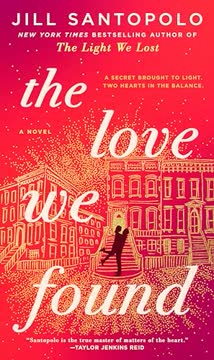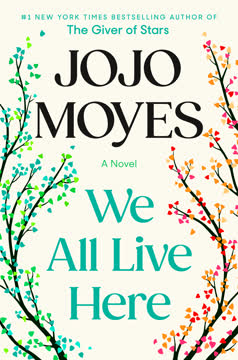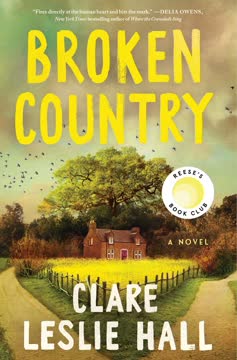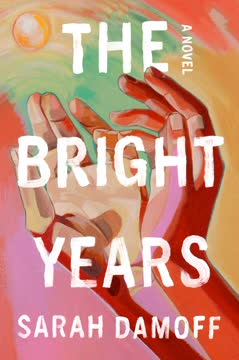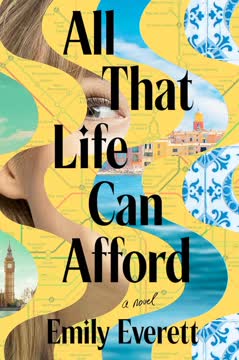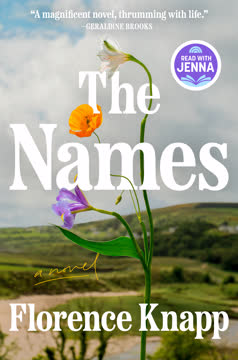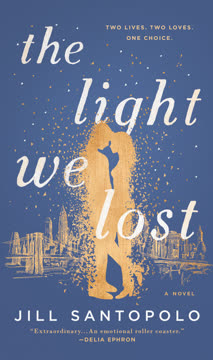Plot Summary
Ten Years of Absence
Lucy, a television producer and mother, visits the grave of her lost love, Gabriel, for the first time in a decade. She reflects on the years since his death, the ache of his absence, and the way his memory persists in her son Samuel's face. The narrative is steeped in longing and unresolved questions about the afterlife, fate, and the enduring power of love. Lucy's internal monologue reveals her struggle to move forward, haunted by dreams where Gabriel is still alive, and the pain of waking to reality. This chapter sets the emotional tone, introducing the central themes of loss, memory, and the search for meaning after tragedy.
Boxes of Memory
When Gabriel's editor contacts Lucy about a retrospective, she is forced to confront the physical remnants of their life together. She opens boxes hidden in her closet, filled with Gabriel's belongings—his sweatshirt, camera, and a mysterious Italian address. The act of sorting through these items is both comforting and painful, reigniting memories of intimacy and joy, but also the loneliness that followed his death. The discovery of the address in Rome becomes a catalyst, stirring questions about Gabriel's life and secrets she never knew. Lucy's journey into the past is both literal and emotional, as she grapples with what to keep, what to let go, and what remains unresolved.
Secrets and Survival
After Gabriel's death, Lucy is shattered, relying on her husband Darren for support while hiding the truth about Samuel's paternity. The secrecy strains their marriage, leading to depression and eventual confession. Darren's reaction is a mix of betrayal and love; he chooses to stay for the children, but the foundation of their relationship is irreparably damaged. The couple's attempt to rebuild is fraught with therapy sessions and emotional distance, culminating in divorce and a shared custody arrangement. Lucy's guilt is palpable, as is her fear of further loss. The chapter explores the cost of secrets and the ways people cling to survival, even at the expense of honesty.
The Italian Address
The address found among Gabriel's things becomes an obsession for Lucy. She wonders if it points to another family, another life he led in Rome. Conversations with friends reveal their concern for her inability to let go, but Lucy is compelled to seek answers. The address symbolizes the unresolved mysteries of Gabriel's life and the possibility of connections she never imagined. Lucy's decision to travel to Rome is both an act of courage and desperation—a quest for closure, understanding, and perhaps a new beginning. The address is a plot device that propels the narrative forward, intertwining fate and free will.
Love, Loss, and Divorce
Lucy's marriage to Darren unravels under the weight of secrets and grief. Their divorce is amicable but painful, with both parents striving to prioritize their children's well-being. The introduction of Courtney, Darren's new wife, adds complexity but also stability to the family dynamic. Lucy's reflections on single motherhood, the shifting puzzle pieces of her life, and the enduring presence of Gabriel's memory highlight the challenges of moving on. The chapter delves into the redefinition of family, the resilience required to adapt, and the lingering wounds that shape Lucy's sense of self.
Parenting in Pieces
Lucy navigates the alternating rhythms of shared custody, cherishing the precious hours with her children while grappling with loneliness during their absence. Her relationship with her children is central, providing both purpose and vulnerability. The narrative explores the psychological impact of divided parenting, the fear of further loss, and the ways in which Lucy's identity is anchored in her role as a mother. The chapter also touches on the support she finds in friendships, particularly with Eva, her elderly neighbor, who offers wisdom and companionship. Parenting becomes both a source of strength and a reminder of what has been lost.
The Rome Connection
Lucy's trip to Rome is a leap into the unknown, driven by the need to understand Gabriel's past. The city's beauty and history mirror her internal landscape—full of echoes, longing, and the possibility of transformation. In Rome, Lucy tracks down the address and meets Bashir, a young Syrian refugee whose life was touched by Gabriel. Their encounter is emotional and revelatory, as Bashir shares stories of Gabriel's kindness and the impact of his photography. Lucy realizes that Gabriel's legacy extends beyond her own grief, touching lives she never knew. The journey is both a search for answers and a step toward healing.
Lampedusa's Children
Following Bashir's lead, Lucy travels to Lampedusa, where Gabriel's photographs of refugee children hang in a library. The images capture moments of hope and resilience amid tragedy, embodying Gabriel's belief in finding beauty everywhere. Lucy meets Dax, an American doctor volunteering on the island, whose own losses mirror hers. Their connection is immediate and profound, offering the possibility of new love. The chapter explores the ripple effects of compassion, the power of art to bear witness, and the ways in which Gabriel's influence endures. Lampedusa becomes a place of convergence—of past and present, grief and hope.
New Beginnings, Old Wounds
Lucy's relationship with Dax blossoms, marked by vulnerability, passion, and the shared experience of loss. Their intimacy is both healing and terrifying, as Lucy confronts the fear of loving again and the possibility of further heartbreak. The narrative delves into the complexities of blending families, the challenges of introducing a new partner to children, and the ever-present shadow of the past. Lucy's journey is one of learning to trust, to risk, and to accept that love can be redemptive even after devastation. The chapter is suffused with longing, tenderness, and the tentative steps toward a future that honors both memory and possibility.
The Truth Unveiled
The decision to tell Samuel the truth about his biological father is fraught with anxiety and conflict. Lucy and Darren struggle to agree on the timing and manner of disclosure, fearing the impact on their children and the fragile peace of their blended family. When the truth finally emerges—prompted by Samuel's discovery of a photograph—the family is rocked by confusion, anger, and grief. Each child reacts differently, processing the revelation through their own lens of trust and betrayal. The chapter explores the necessity and cost of honesty, the pain of shattering illusions, and the hope that truth can ultimately set them free.
Family Redefined
In the aftermath of the revelation, Lucy works to repair her relationships with her children, particularly Violet, who feels most betrayed. Therapy, open conversations, and shared experiences become tools for healing. The family's definition expands to include not just blood, but love, choice, and acceptance. Lucy's friendship with Eva, her co-parenting with Courtney, and her evolving relationship with Dax all contribute to a new understanding of what it means to belong. The chapter is a meditation on forgiveness, resilience, and the ongoing work of creating a family that can withstand the storms of truth and change.
Letting Go, Letting In
Lucy's journey toward healing requires her to let go of Gabriel—not to forget, but to make space for new love and new possibilities. The process is gradual and painful, marked by setbacks and moments of clarity. Dax's presence becomes a source of comfort and inspiration, but Lucy must also confront her own fears and insecurities. The narrative explores the tension between holding on and moving forward, the courage required to open one's heart again, and the realization that love is not a finite resource. Letting go becomes an act of faith, a necessary step toward wholeness.
Healing and Hope
As Lucy's family adjusts to their new reality, moments of joy and connection begin to outweigh the pain. Samuel's artistic talent flourishes, inspired by the legacy of both his fathers. Violet and Liam find their own paths to understanding and acceptance. Lucy's work on a new television show becomes an outlet for creativity and renewal. The chapter is suffused with hope, as the family learns to navigate the complexities of their history with honesty and grace. Healing is depicted not as a destination, but as an ongoing process—one that requires patience, compassion, and the willingness to keep trying.
The Gallery of Then and Now
The culmination of Gabriel's retrospective and the gallery show becomes a celebration of legacy, resilience, and the power of storytelling. Bashir's photographs, paired with Gabriel's originals, create a dialogue between past and present, capturing the evolution of people and places over time. The event brings together family, friends, and the wider community, offering closure and affirmation. Lucy's pride in Samuel's contribution, her gratitude for the support of loved ones, and her recognition of Gabriel's enduring influence all converge in this moment. The gallery becomes a space for reflection, connection, and the affirmation that life, like art, is ever-changing.
The Power of Telling
The act of sharing secrets—first with Samuel, then with the wider family—proves transformative. Lucy's relationships with her parents, brother, and friends deepen as she embraces vulnerability and honesty. The narrative underscores the importance of telling one's story, of refusing to let shame or fear dictate the boundaries of love. The process is not without pain, but it is ultimately redemptive, allowing for reconciliation, understanding, and the possibility of new beginnings. The chapter affirms that the stories we tell—about ourselves, our families, our losses—shape who we become.
Love's Second Chance
After setbacks and heartbreak, Lucy and Dax find their way back to each other, supported by the acceptance of their children and the wisdom of experience. Their reunion is marked by gratitude, humility, and the recognition that love is always a risk worth taking. The narrative celebrates the courage to begin again, to trust in the possibility of happiness after loss. Lucy's journey is one of self-discovery, resilience, and the affirmation that love, in all its forms, is both fragile and enduring. The chapter is a testament to the power of hope and the beauty of second chances.
Facing the Past
On the tenth anniversary of Gabriel's death, Lucy visits his grave, bringing with her the new edition of his book and the knowledge that his legacy lives on in their son. The act of remembrance is both solemn and celebratory, a recognition of the ways in which the past shapes the present. Lucy's reflections are filled with gratitude, sorrow, and acceptance. She acknowledges the pain of loss, the gifts of love, and the necessity of moving forward. The chapter is a meditation on time, memory, and the enduring connections that transcend death.
Sunrise, Sunset
The novel closes with Lucy at Gabriel's grave, contemplating the passage of time and the cycles of love and loss that define a life. She finds solace in the knowledge that Gabriel's influence endures—in Samuel's art, in the family she has built, in the love she has found again. The sunrise and sunset on the headstones symbolize hope, continuity, and the promise of new beginnings. Lucy's journey is one of transformation, marked by the courage to face the past, the strength to tell the truth, and the grace to embrace the future. The story ends with a sense of peace, possibility, and the affirmation that love, once found, is never truly lost.
Characters
Lucy Carter Maxwell
Lucy is the emotional center of the novel—a woman marked by profound love and devastating loss. Her journey is one of survival, self-discovery, and the relentless pursuit of truth. As a mother, she is fiercely devoted, navigating the complexities of shared custody and blended family life. As a lover, she is both passionate and guarded, struggling to reconcile her past with her desire for new beginnings. Lucy's psychological landscape is shaped by guilt, longing, and the fear of further loss, but also by resilience, creativity, and the capacity for hope. Her relationships—with Gabriel, Darren, her children, and Dax—reveal her depth, vulnerability, and the ongoing work of healing.
Gabriel Samson
Gabriel, though deceased, is a constant presence in Lucy's life and the narrative. A photojournalist driven by a quest for beauty and meaning, his legacy is felt in the lives he touched—Lucy, Samuel, Bashir, and countless others. Gabriel's memory is both a source of comfort and pain, representing unfinished business, unresolved questions, and the enduring power of love. His character is revealed through memories, photographs, and the stories of those who knew him. Gabriel embodies the themes of fate, free will, and the search for light amid darkness. His absence shapes the choices and emotional arcs of every other character.
Darren Maxwell
Darren is Lucy's ex-husband and the adoptive father of Samuel. His character is defined by loyalty, pride, and the struggle to forgive. Darren's initial support in the wake of Gabriel's death gives way to resentment and the eventual dissolution of his marriage. His need for control and fear of comparison to Gabriel create ongoing tension, particularly around the revelation of Samuel's paternity. Despite his flaws, Darren is a devoted father, committed to the well-being of all three children. His journey is one of acceptance, adaptation, and the painful work of letting go.
Samuel (Sammy) Maxwell
Samuel is the living embodiment of Lucy and Gabriel's love—a child whose resemblance to his biological father is both a comfort and a source of confusion. Sensitive, creative, and perceptive, Samuel's journey is one of self-discovery and belonging. The revelation of his true parentage is both destabilizing and affirming, allowing him to connect with his roots and embrace his artistic gifts. Samuel's relationships with his siblings, parents, and the memory of Gabriel are central to the novel's exploration of identity, legacy, and the power of truth.
Violet Maxwell
Violet, Lucy's eldest child, is deeply affected by the family's secrets and the upheaval they cause. Intelligent, sensitive, and fiercely loyal, she grapples with feelings of betrayal, anger, and the challenge of trusting her parents again. Violet's journey mirrors Lucy's in many ways—a search for understanding, the need for honesty, and the work of forgiveness. Her evolving relationship with her mother is a testament to the resilience of familial love and the possibility of healing after rupture.
Liam Maxwell
Liam, the middle child, is introverted and thoughtful, often caught between the emotional storms of his siblings. His response to the family's revelations is marked by withdrawal and a longing for normalcy. Liam's interests in music and logic provide him with a sense of control and identity amid chaos. His character highlights the varied ways children process trauma and change, and the importance of patience, support, and unconditional love.
Dax Armstrong
Dax is an American doctor volunteering in Lampedusa, himself marked by the loss of a child and the dissolution of his marriage. His connection with Lucy is immediate and profound, rooted in shared grief and the hope for renewal. Dax's character is defined by compassion, resilience, and the willingness to risk love again. His presence challenges Lucy to confront her fears, embrace vulnerability, and believe in the possibility of happiness after loss. Dax's journey is one of healing, both for himself and for those he loves.
Bashir Hassan
Bashir is a Syrian refugee whose life was transformed by Gabriel's kindness and mentorship. Now a budding photojournalist, Bashir embodies the ripple effects of compassion and the enduring impact of art. His relationship with Lucy is one of mutual respect and shared loss, bridging cultures and generations. Bashir's role in the gallery show and his willingness to revisit the past highlight the themes of memory, resilience, and the power of storytelling.
Eva
Eva, Lucy's elderly neighbor and friend, provides guidance, comfort, and perspective throughout the novel. A survivor of profound loss herself, Eva's wisdom is hard-won and deeply compassionate. She encourages Lucy to seek answers, embrace love, and lead with honesty. Eva's presence is a reminder of the importance of intergenerational friendship, the value of art, and the possibility of new beginnings at any age.
Courtney
Courtney, Darren's second wife, is a stabilizing force in the blended family. Empathetic, intelligent, and secure in her role, she supports the children and encourages honesty. Courtney's willingness to confront difficult truths and her advocacy for Samuel's right to know his origins are crucial to the family's healing. Her character exemplifies the potential for love and acceptance beyond traditional boundaries.
Plot Devices
Nonlinear Narrative and Memory
The novel employs a nonlinear structure, weaving together past and present through Lucy's reflections, letters, and direct address to Gabriel. This approach allows for a deep exploration of grief, memory, and the ways in which the past shapes the present. The use of memory as a narrative device creates emotional resonance and invites readers to inhabit Lucy's psychological landscape.
The Italian Address as Catalyst
The discovery of the Roman address among Gabriel's belongings serves as a classic inciting incident, driving Lucy's quest for answers. It functions as both a literal clue and a metaphor for the unknown aspects of those we love. The address leads to new characters, settings, and revelations, intertwining fate and agency.
Art and Photography as Metaphor
Gabriel's photographs, and later Bashir's, are central to the novel's exploration of legacy, memory, and the power of storytelling. The gallery show, the retrospective, and the act of creating art become metaphors for healing, transformation, and the enduring impact of love. Art is both a plot device and a thematic throughline, connecting characters across time and space.
Secrets and Revelation
The tension between secrecy and honesty is a primary engine of the plot. The decision to tell Samuel the truth about his parentage, and the subsequent fallout, creates emotional stakes and propels character development. The process of revelation is depicted as both painful and necessary, underscoring the novel's commitment to authenticity and growth.
Parallel Relationships and Second Chances
The parallel experiences of Lucy and Dax—both having lost great loves, both seeking healing—create a sense of symmetry and possibility. Their relationship is a vehicle for exploring the themes of risk, vulnerability, and the courage to begin again. The novel uses their connection to examine the complexities of blended families, the challenges of moving on, and the hope inherent in second chances.
Foreshadowing and Symbolism
The novel employs foreshadowing through dreams, recurring images (such as the sunrise and sunset on the headstones), and symbolic acts (like the tossing of coins in the Trevi Fountain). These devices create a sense of inevitability, continuity, and the cyclical nature of love and loss. Symbolism enriches the emotional texture and invites readers to find meaning beyond the literal.
Analysis
Jill Santopolo's The Love We Found is a poignant meditation on grief, love, and the transformative power of truth. Through Lucy's journey, the novel explores the enduring impact of loss and the ways in which memory shapes identity and relationships. The narrative refuses easy answers, instead embracing the messiness of blended families, the pain of secrets, and the courage required to move forward. At its core, the book is a celebration of resilience—the ability to survive heartbreak, to rebuild trust, and to risk love again. Santopolo's use of art and storytelling as metaphors for healing underscores the importance of bearing witness, both to our own pain and to the lives of others. The novel's modern relevance lies in its honest portrayal of family complexity, the necessity of vulnerability, and the affirmation that love, though fragile, is endlessly renewable. The ultimate lesson is that healing is not about erasing the past, but about integrating it—honoring what was lost while making space for what can still be found.
Last updated:
Review Summary
The Love We Found receives mixed reviews as a sequel to The Light We Lost. Many readers praise its emotional depth, character development, and exploration of love, loss, and family dynamics. The book follows Lucy's life ten years after the events of the first novel, delving into her journey of healing and finding new love. Some readers felt the sequel unnecessary or lacking compared to its predecessor, citing issues with pacing and character interactions. Overall, the book elicits strong emotional responses from readers, with many appreciating the continuation of Lucy's story.
Similar Books
Download PDF
Download EPUB
.epub digital book format is ideal for reading ebooks on phones, tablets, and e-readers.
